

East wall frescoes with woman holding grain, woman holding fruit, and infant in the bulb of a plant |
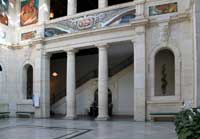
|

|
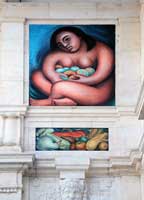
|
Figure on the right sideThe placement of the frescoes is purposeful with images of fertility and new life in the east while a version of death and the Last Judgment occupy the west wall. Diego had seen Giotto's frescoes in Italy, and just as the Scrovegni Chapel in Padua depicts the Annunciation in the east/altar end, (the Annunciation being the moment of Christís conception in Catholic theology), here positive images of fertility and birth are represented.Some scholars relate these nude figures to ancient Mexican sculpture but in body type they also resemble Renoir's late nudes (in the rubbery limbs and rounded breasts) and in their mask-like faces they resemble some of Picasso's semi-cubist works. Riveraís decadesí long stay in Europe had acquainted him with both artistís works. But the figuresí symbolic connection with the Americans is important and emphasized by the grain and fruits they hold which are also depicted below them--all grown in Michigan and the Americas. |
|
Figure on the left sideThis fertility figure has golden hair whereas the one on the right has black hair. This is usually taken to associate both the North and the South American continents with fertility. |
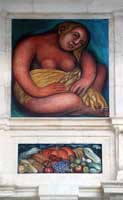
|
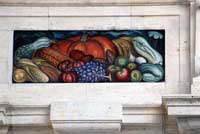
|
Infant in the bulb of a plant | ||
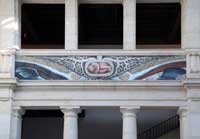
|
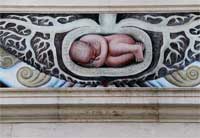
|
The infant represents the beginnings of life as well as a dependence on the riches of the earth, indicated by the various strata. At the lower edges of the panel, Rivera painted plowshares, a reference both to agriculture, an early form of technology, as well as to the potential destructive power of technology--a sub-theme which recurs in the murals. |